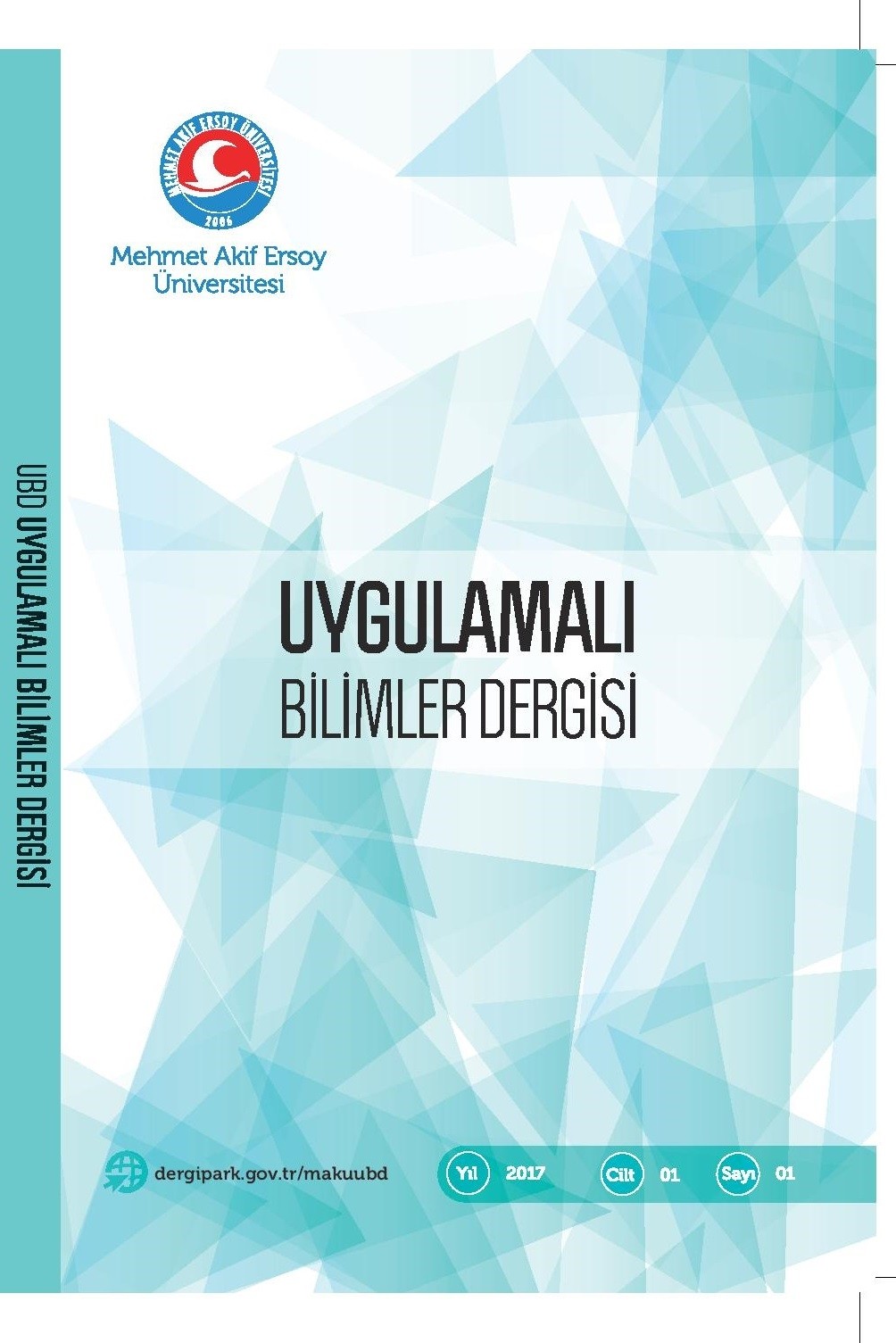Bulut Tabanlı Bilgisayarlı Görü Kullanılarak Sesli Betimleme Sistem Tasarımı
Sesli Betimleme, Bilgisayarlı Görü, Metinden Konuşmaya Çeviri, Bulut Bilişim, Makina Çevirisi, Bulut Bilişim
Design of Audio Description System Using Cloud Based Computer Vision
Audio Description, Computer Vision, Text to Speech Translation, Machine Translation, Cloud Computing,
___
- ADI AD Guidelines Committee (2003), Guidelines for Audio Description, Retrieved June 23, 2019, from http://www.acb.org/adp/guidelines.html, 23.06.2019.
- Aslan, E. (2018). Otomatik Çeviri Araçlarının Yabancı Dil Öğretiminde Kullanımı: Google Çeviri Örneği, Selçuk Üniversitesi Edebiyat Fakültesi Dergisi, 0(39), 87-104.
- Aydemir, E. (2018). Weka ile Yapay Zeka, Ankara: Seçkin Yayıncılık.
- Benecke, B. (2004). Audio-Description, Meta, 49 (1), 78–80.
- Carvalho, P., Trancoso, I.M., & Oliveira, L.C. (1998). Automatic Segment Alignment for Concatenative Speech Synthesis in Portuguese, Proc. of the 10th Portuguese Conference on Pattern Recognition, RECPAD'98, Lisbon.
- Dawson-Howe, K. (2014). A Practical Introduction to Computer Vision with OpenCV, John Wiley & Sons.
- Delgado, H., Matamala, A. & Serrano, J. (2015). Speaker diarization and speech recognition in the semi-automatization of audio description: An exploratory study on future possibilities?, Cadernos de Tradução, 35(2), 308-324.
- Gagnon, L., Chapdelaine, C., Byrns, D., Foucher, S., Heritier, M. & Gupt, V. (2010). A computer-vision-assisted system for Videodescription scripting. 2010 IEEE Computer Society Conference on Computer Vision and Pattern Recognition - Workshops, San Francisco, CA, USA, 1-8.
- Google Cloud, (n.d.). Cloud Translation, Retrieved May 15, 2019, https://cloud.google.com/translate/
- Jang, I., Ahn, C. & Jang, Y. (2014). Semi-automatic DVS Authoring Method. Computers Helping People with Special Needs: 14th International Conference, ICCHP 2014. Springer International Publishing, Switzerland.
- Klancnik, S., Ficko, M., Balic, J. & Pahole, I. (2015). Computer Vision-Based Approach to End Mill Tool Monitoring, International Journal of Simulation Modelling, 14(4), 571–583.
- Krishna, R. (2017). Computer Vision: Foundations and Applications, Stanford: Stanford University.
- Lakritz, J. & Salway, A. (2006). The semi-automatic generation of audio description from screenplays, Dept. of Computing Technical Report, University of Surrey, UK.
- Microsoft Azure, (n.d.). Translator Text API, Retrieved June 26, 2019, https://azure.microsoft.com/en-gb/services/cognitive-services/translator-text-api
- Nabiyev, V.V. (2016). Yapay Zeka (5th ed.), Ankara: Seçkin Yayıncılık.
- Netflix, Netflix Audio Description Style Guide v2.1, Retrieved November 12, 2019, https://partnerhelp.netflixstudios.com/hc/en-us/articles/215510667-Audio-Description-Style-Guide-v2-1.
- O'Malley, M. H. (1990). Text-to-speech conversion technology, Computer, 23(8), 17-23.
- Pagani, M. (2005). Encyclopedia of multimedia technology and networking, Hershey PA, USA: Idea Group Inc.
- Remael, A., Reviers, N. & Vercauteren, G. (n.d.). ADLAB Audio Description guideline, Retrieved June 24, 2019, http://www.adlabproject.eu/Docs/adlab%20book/index.html.
- Rohrbach, A., Torabi, A., Rohrbach, M., Tandon, N., Pal, C., Larochelle, H., Courville, A. & Schiele, B. (2017). Movie Description, International Journal of Computer Vision, 123(1), 94–120.
- Whitehead, J. (2015). What is audio description. International Congress Series, 1282, 960-963.
- Yayın Aralığı: Yılda 2 Sayı
- Başlangıç: 2017
- Yayıncı: Burdur Mehmet Akif Ersoy Üniversitesi
Demir veya Çelikten Eşya Ticaretinde Türkiye’nin Karşılaştırmalı Üstünlüğü ve Rekabet Gücü
Celile GÜRBÜZ, Özlem ÇETİNKAYA BOZKURT, Nil Esra DAL
Yüksek Potansiyelli İnsan Kaynakları Yönetimi
Ayşe ASİLTÜRK, Mustafa HÜNKAROĞLU
Bulut Tabanlı Bilgisayarlı Görü Kullanılarak Sesli Betimleme Sistem Tasarımı
Farklı Hızlarda Çalışan PMSM'nin Simülasyonu ve PI Denetleyici Parametrelerinin Optimizasyonu
Fatih Alpaslan KAZAN, Osman BİLGİN
Türkiye’de İthalatın Artmasında Lüks Malların Rolü: Akıllı Cep Telefonu Talebi
Yol Geometrik Standartlarının Karayolu İşletme Maliyetleri Üzerindeki Etkisinin İncelenmesi
Soner CANVER, Halit ÖZEN, Abdulsamet SARAÇOĞLU, Abdullah MALTAŞ
Konaklama İşletmelerinde Çevre Dostu Yönetim: Uygulamalar Açısından Bir Değerlendirme
